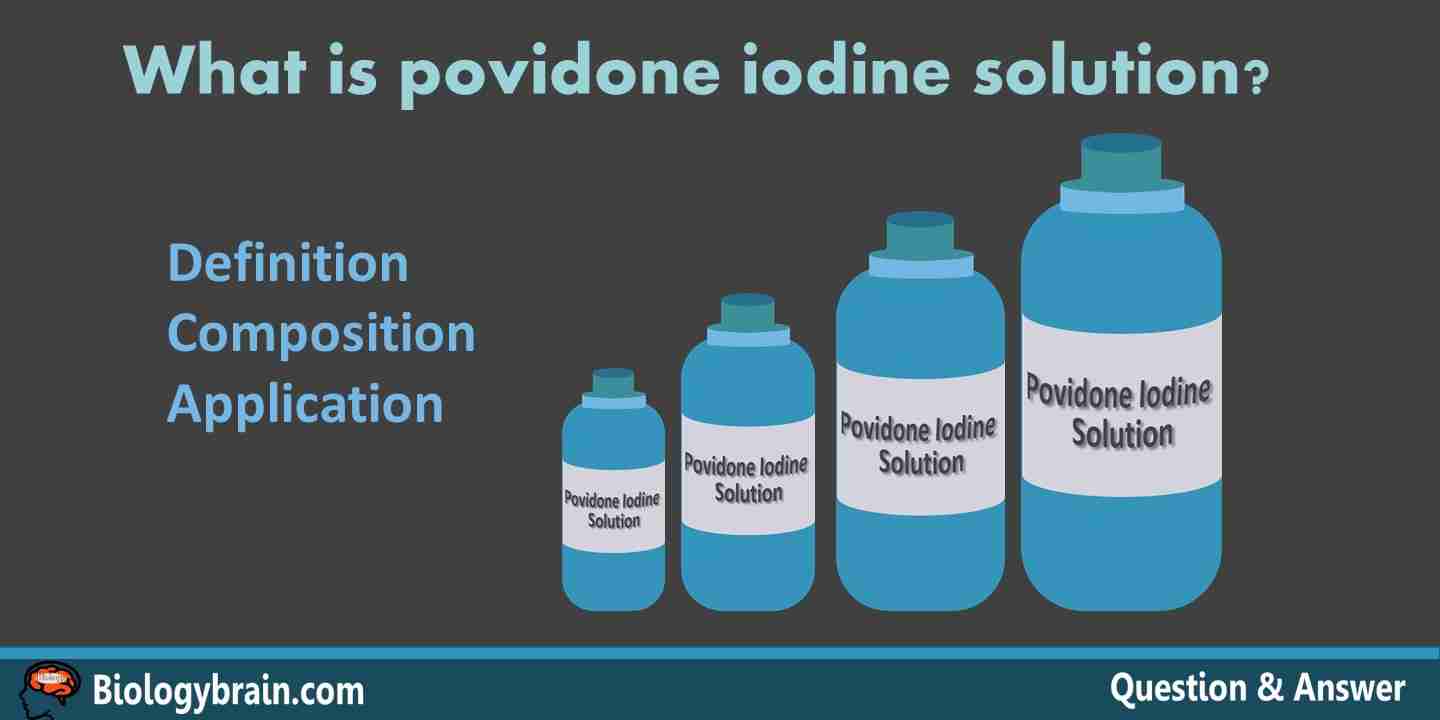Povidone Iodine Definition: Povidone-iodine is an iodophor solution that is made up of polyvinylpyrrolidone (PVP) and water-soluble iodine complex and that can be used to control the growth of both macro and microorganisms.

In the iodophor solution, the free iodine group slowly releases from the polyvinylpyrrolidone iodine (PVPI) and kills prokaryotic and eukaryotic cells through iodination of membrane lipids and oxidation of membrane and cytoplasmic components.
Thus, the solution shows a broad spectrum of antimicrobial activity, especially against bacteria, viruses, fungi, and protozoa. Slow liberation of iodine from the PVPI complex in solution reduces the toxic effect of iodine on animal cells.
Frequently asked questions
What is povidone-iodine used for?
Answer: An iodophor solution is mainly used as a topical antiseptic in surgery and is also used to get rid of skin and mucous membrane infections. This solution is also used to prepare the aerosol disinfectant spray.
What is povidone-iodine good for?
Answer: Since it has a broad range of antimicrobial activity, that can be used in the preparation of antiseptic creams, which can kill both gram-positive and -negative bacteria and help in wound healing.
Bigliardi PL et al 2017, mentioned the important factors of this solution, which include,
- It can penetrate bacterial biofilms
- Reduces bacterial drug resistance
- It shows anti-inflammatory activities
- Good tolerability
- Low cytotoxicity
- It exhibit no adverse effects on wound healing
What is povidone-iodine made from?
Answer: This solution is made up of polyvinylpyrrolidone (PVP) and a complex of water-soluble iodine.
What are povidone-iodine swabs used for?
Answer: To disinfect the skin before surgery and to reduce the bacterial load on the skin that can cause infection.
References:
Bigliardi PL, Alsagoff SAL, et al., 2017. Povidone-iodine in wound healing: A review of current concepts and practices. International Journal of Surgery.
Aristine Cheng, Hsin-Yun Sun et al., 2017. In vitro evaluation of povidone-iodine and chlorhexidine against outbreak and non-outbreak strains of Mycobacterium abscessus using standard quantitative suspension and carrier testing. Antimicrob Agents Chemother.
Other important questions:
Q. The alpha-helix and beta-sheet are found at which level of protein organization?
Q. Which cytoskeletal proteins provide the structural support for microvilli?
Q. Which of these does not contain a structural protein?
Q. What level of protein structure is associated with the sequence of amino acids?
Q. Which of the following pertains to typhoid fever?
Q. Which of the following tests is an agglutination test for the bacterium causing typhoid fever?










